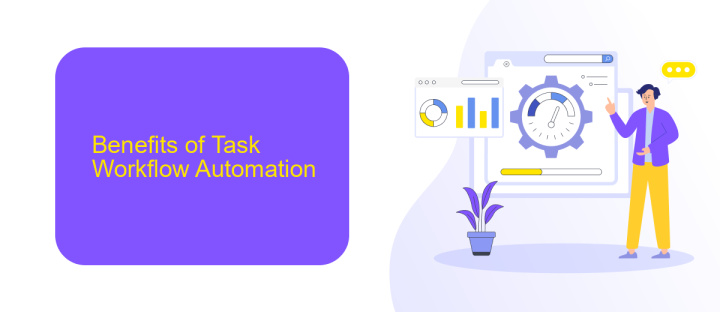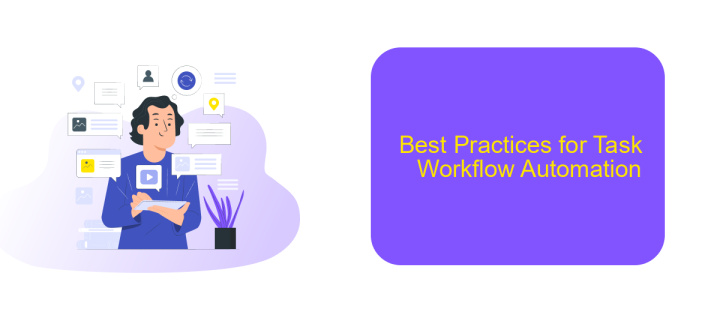Task Workflow Automation
Task workflow automation is revolutionizing the way businesses operate by streamlining repetitive processes and enhancing productivity. By leveraging advanced software and technologies, organizations can automate routine tasks, reduce human error, and free up valuable time for more strategic activities. This article explores the benefits, challenges, and best practices of implementing task workflow automation in today's fast-paced business environment.
Introduction
Task Workflow Automation is revolutionizing the way businesses operate by streamlining processes and increasing efficiency. By automating repetitive tasks, organizations can focus on more strategic activities, thereby improving productivity and reducing human error.
- Increased Efficiency: Automation speeds up task completion and reduces delays.
- Cost Savings: Reducing manual labor lowers operational costs.
- Consistency: Automated workflows ensure tasks are performed uniformly.
- Scalability: Easily adapt to growing business needs without additional resources.
Integrating various tools and services is crucial for effective task workflow automation. Platforms like ApiX-Drive facilitate seamless integration between different applications, allowing data to flow effortlessly across systems. This connectivity ensures that automated workflows are not siloed but are part of a cohesive, interconnected business process.
Benefits of Task Workflow Automation

Task workflow automation significantly enhances productivity by streamlining repetitive tasks and minimizing human errors. By automating routine processes, employees can focus on more strategic activities, thereby increasing overall efficiency. Automation tools can also ensure consistency and standardization across various tasks, which is crucial for maintaining quality and compliance in business operations.
Moreover, integrating different software applications through automation platforms like ApiX-Drive allows for seamless data transfer and coordination between systems. This not only saves time but also reduces the risk of data discrepancies and manual input errors. By leveraging such integration services, businesses can achieve a more cohesive and responsive workflow, ultimately leading to better decision-making and improved operational performance.
Challenges of Task Workflow Automation

Implementing task workflow automation can significantly enhance efficiency, but it also presents several challenges. Organizations often face difficulties in seamlessly integrating various tools and platforms, which is crucial for a smooth workflow.
- Integration Complexity: Connecting multiple systems can be complex and time-consuming. Tools like ApiX-Drive can simplify this by providing a unified platform for integration.
- Data Security: Automating workflows involves handling sensitive data, making robust security measures essential to prevent breaches.
- Customization Needs: Every organization has unique requirements, and finding a one-size-fits-all solution is challenging. Customization often requires additional resources and expertise.
- Employee Adaptation: Introducing new automated processes can face resistance from employees accustomed to manual workflows, necessitating comprehensive training and change management.
- Maintenance and Updates: Automated systems require regular updates and maintenance to ensure they function correctly and adapt to changing needs.
Addressing these challenges requires a strategic approach, including selecting the right tools, such as ApiX-Drive for integration, ensuring robust security protocols, and investing in employee training. By doing so, organizations can fully leverage the benefits of task workflow automation while mitigating potential obstacles.
Best Practices for Task Workflow Automation

Implementing task workflow automation can significantly enhance productivity and efficiency within an organization. To achieve the best results, it is essential to follow certain best practices that ensure smooth and effective automation.
Firstly, clearly define the tasks and workflows that need automation. Understand the specific requirements and goals of your processes to identify which tasks can benefit most from automation. This helps in avoiding unnecessary complexities and focusing on high-impact areas.
- Utilize reliable automation tools and platforms.
- Ensure seamless integration with existing systems using services like ApiX-Drive.
- Regularly monitor and update automated workflows to adapt to changing needs.
- Provide adequate training and support to employees for smooth adoption.
By following these best practices, organizations can optimize their task workflows, reduce manual errors, and free up valuable time for more strategic activities. Leveraging services such as ApiX-Drive can further streamline integrations, making the automation process more efficient and effective.
Future of Task Workflow Automation
The future of task workflow automation is poised to be transformative, driven by advancements in artificial intelligence and machine learning. These technologies will enable more sophisticated automation capabilities, allowing for predictive analytics and enhanced decision-making processes. As a result, businesses will experience increased efficiency and productivity, reducing the need for manual intervention in routine tasks. Moreover, the integration of AI will facilitate more personalized and adaptive workflows, catering to the unique needs of different industries and organizational structures.
In addition to AI advancements, the future of task workflow automation will see a greater emphasis on seamless integration of various tools and platforms. Services like ApiX-Drive will play a crucial role in this evolution, offering user-friendly solutions for connecting disparate systems and automating data transfer between them. This will enable organizations to create more cohesive and streamlined workflows, ultimately leading to better data management and more informed decision-making. As these technologies continue to evolve, we can expect task workflow automation to become an indispensable component of modern business operations.
FAQ
What is task workflow automation?
How can task workflow automation benefit my business?
What tasks can be automated within a workflow?
How do I get started with task workflow automation?
Is it difficult to set up task workflow automation?
Apix-Drive will help optimize business processes, save you from a lot of routine tasks and unnecessary costs for automation, attracting additional specialists. Try setting up a free test connection with ApiX-Drive and see for yourself. Now you have to think about where to invest the freed time and money!

